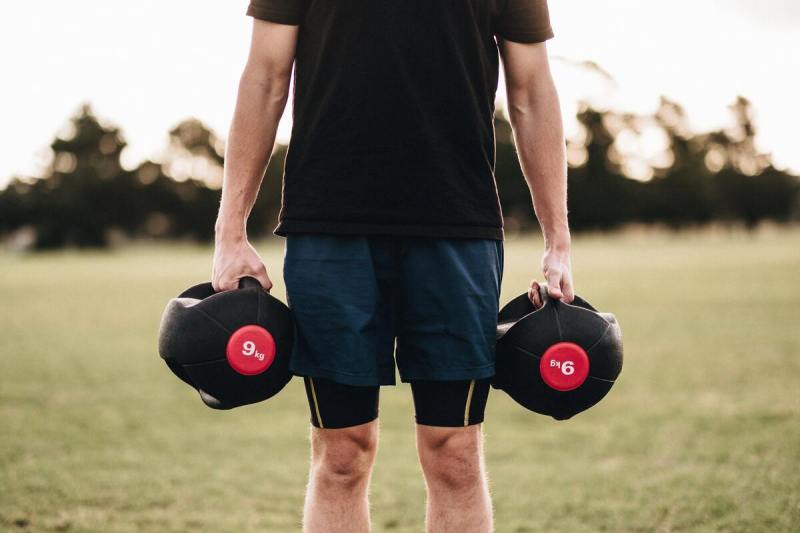
Are you ready to take your fitness to the next level and build the strong, toned body you’ve always wanted? If you are, an upper/lower split workout routine is a great way to target specific muscle groups and improve your strength and endurance.
By focusing on your upper or lower body on designated days, you can hone in on specific areas that need improvement. But where do you start?
In this guide, we’ll discuss everything you need to know about upper lower split workout routines, including the benefits and drawbacks, sample workout plans, and exercises. Whether you’re a beginner or a seasoned pro, we’ve got you covered!
So if you’re ready to start building that strong and toned body, grab your weights and check out the workout plans and exercises in this guide. It is time to dive in!

How to structure an upper/lower body workout routine
In structuring an upper/lower body workout routine, there are a few key things to consider, the most important of which is the frequency of your workouts. The number of days you choose to divide your workout routine will depend on your fitness goals, schedule, and recovery time.
A two-day split routine is a popular option for those who are just starting or have a busy schedule. This allows you to focus on your upper or lower body on specific days and give your muscles sufficient time to recover before working them again.
A four-day split routine is another popular option. It allows for more targeted muscle work. With this type of routine, you can divide your upper and lower body into two days each, providing more focus on specific muscle groups.
Finally, more advanced fitness enthusiasts and bodybuilders often choose a six-day split routine. This routine allows you to focus on individual muscle groups more frequently, providing more opportunities to target specific areas that need improvement.
However, you should note that whether you call them lower upper split workouts or upper lower split workouts, the key is to properly balance the workload between the upper and lower body and avoid muscle imbalances. It’s also crucial to pay attention to your muscles’ recovery time and adjust your routine accordingly.
When structuring an upper/lower body workout routine, consider the frequency that works best for you, your fitness goals, and your schedule. In addition, make sure to balance the workload and pay attention to muscle recovery. With the right approach, you can achieve your

What muscles do you target each day?
While the name of the split may sound self-explanatory, let’s still address what muscles you need to focus on in upper body days and lower body days to make sure no muscle group accidentally gets neglected.
For your upper body day workouts, go ahead and make sure each of the following muscles is targeted with at least one exercise each:
- Chest
- Back
- Shoulders
- Biceps
- Triceps
On your lower body days, the following muscle groups need to be worked:
- Glutes
- Hamstrings
- Quads
- Calves
It is up to you which days you would prefer to exercise your abdominals. Some people may prefer upper body days because the abdominals are above the waist, while other people may choose lower body days because there are fewer muscle groups on your lower body than upper.

Who is this split good for?
The split is good for anyone who wants to take their fitness to the next level — whether you’re a beginner just starting your
An upper/lower body split is OK for those who want to focus on specific muscle groups and see progress faster. It allows for more flexibility in your workout schedule and helps to balance the workload between the upper and lower body, avoiding muscle imbalances.
It’s also suitable for people with busy schedules, as it allows them to target specific muscle groups on designated days with sufficient time for recovery.
On the other hand, a six-day split routine is an amazing option for those searching for a more intense workout routine. This schedule allows you to focus on individual muscle groups more frequently and target specific areas.
It’s important to note that while this workout routine can benefit many, it’s not for everyone. Therefore, it’s always best to consult your doctor or a fitness professional before starting any new workout routine.
It’s also important to have a balanced diet to ensure you get enough protein to fuel your muscle growth.

Benefits of the upper/lower body split
1. Target specific muscle groups
Upper/lower body splits let you target specific muscle groups and show results faster than if you were doing a full-body workout.
2. Flexibility
This routine allows for more flexibility in your workout schedule and helps you to balance the workload between the upper and lower body to avoid muscle imbalances.
3. Intensity
This is an exceptional benefit because everyone can choose the intensity of their workout depending on their strengths and how fast they’d like to see results.
For instance, a six-day split routine is great for those who want a high-intensity workout because it allows them to focus on individual muscle groups more frequently and target specific muscle groups.
4. Improved strength and endurance
An upper/lower body lets you focus on specific muscle groups, which in turn can improve your strength and endurance.

Downsides of the upper/lower body split
1. Time-consuming
Upper/lower body splits can be time-consuming because they demand you to focus on specific muscle groups. They also require even more time to plan and prepare for specific exercises for every muscle group.
2. Risk of injury
You are at risk of getting injured if you do not exercise correctly.
3. Not suitable for everyone
Upper/lower body splits are not suitable for everyone. As always, consult a doctor or fitness professional before you start any new workout routine.

Example upper/lower body split routine
Upper body day 1:
| Exercise | Sets | Reps | Rest Time |
| Bench Press | 3 | 8–12 | 60–90 seconds |
| Tricep Dips | 3 | 8–12 | 60–90 seconds |
| Chest Fly | 3 | 8–12 | 60–90 seconds |
| Tricep Pushdowns | 3 | 8–12 | 60–90 seconds |
| Plank | 3 | 8–12 | 60–90 seconds |
Lower body day 1:
| Exercise | Sets | Reps | Rest Time |
| Barbell Back Squats | 3 | 8–12 | 2–3 minutes |
| Bodyweight Lunges | 3 | 12–15 | 1–2 minutes |
| Glute Bridges | 3 | 12–15 | 1–2 minutes |
| Calf Raises | 3 | 12–15 | 1–2 minutes |
| Plank Leg Lifts | 3 | 12–15 | 1–2 minutes |
Upper body day 2:
| Exercise | Sets | Reps | Rest Time |
| Pull-ups | 4 | 8–12 | 60 seconds |
| Barbell Bicep Curls | 3 | 10 | 1–2 minutes |
| Inverted Rows | 3 | 13 | 1–2 minutes |
| Bodyweight Rows | 3 | 10 | 1–2 minutes |
| Push-Ups | 4 | 8 | 1–2 minutes |
Lower body day 2:
| Exercise | Sets | Reps | Rest Time |
| Deadlifts | 3 | 8–12 | 2–3 minutes |
| Good Mornings | 3 | 12–15 | 1–2 minutes |
| Standing Hamstring Curls | 3 | 12–15 | 1–2 minutes |
| Plank Leg Lifts | 3 | 12–15 | 1–2 minutes |
| Lying Leg Curls | 3 | 12–15 | 1–2 minutes |

Final thoughts
The upper/lower body split workout routine is an effective way to target specific muscle groups and improve your strength and endurance. It allows for more flexibility in your workout schedule and helps balance the workload between the upper and lower body, thereby avoiding muscle imbalances.
However, it’s important to keep in mind that this type of workout routine may not be suitable for everyone, so consulting a doctor or fitness professional before starting is highly recommended.
Additionally, it’s important to pay attention to your diet and nutrition, warm up properly before starting any workout routine, and cool down and stretch after the workout for optimal results.
It’s also essential to note that while a split routine can be beneficial, a full-body workout routine can also be effective in achieving your fitness goals. The key is to find a routine that works best for you and your schedule and to tailor it to suit your



